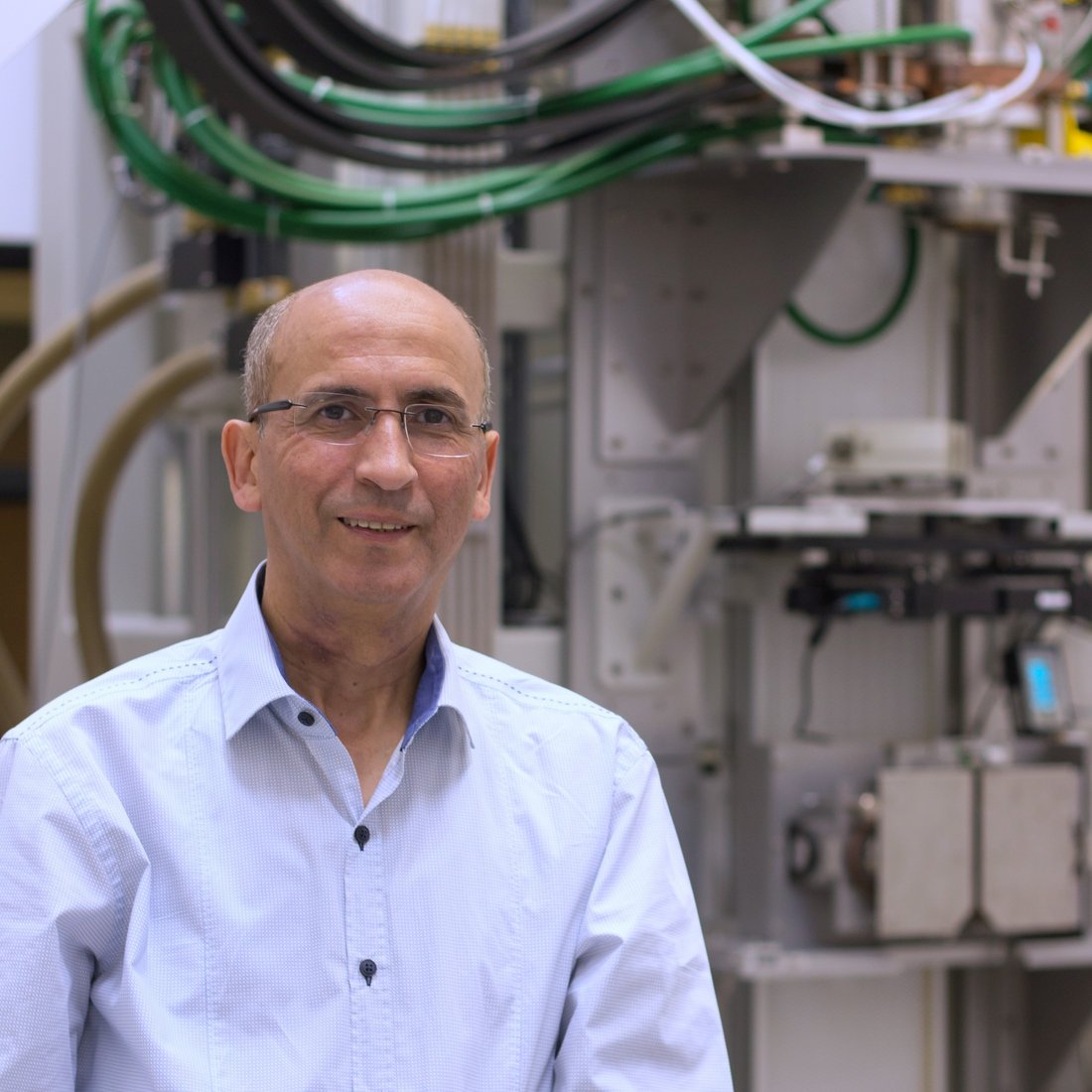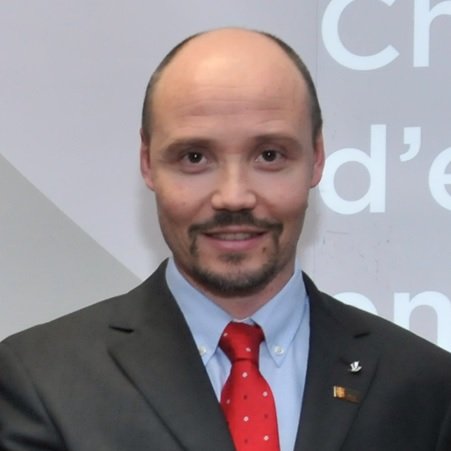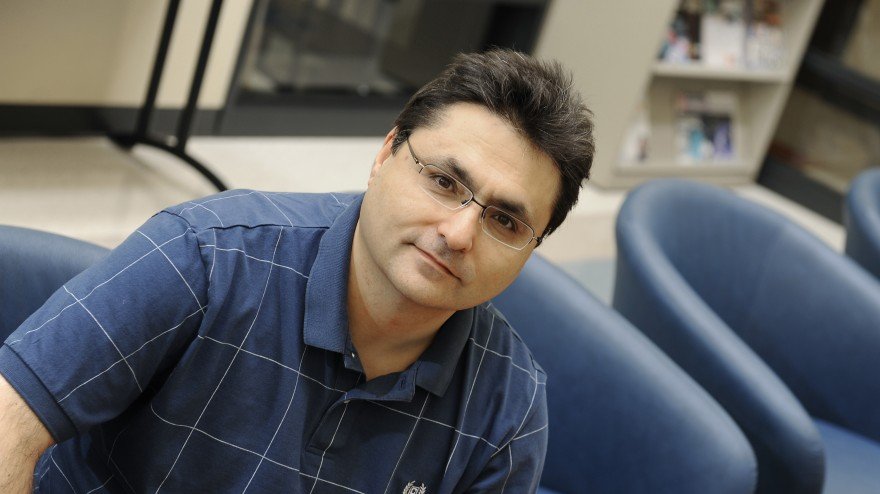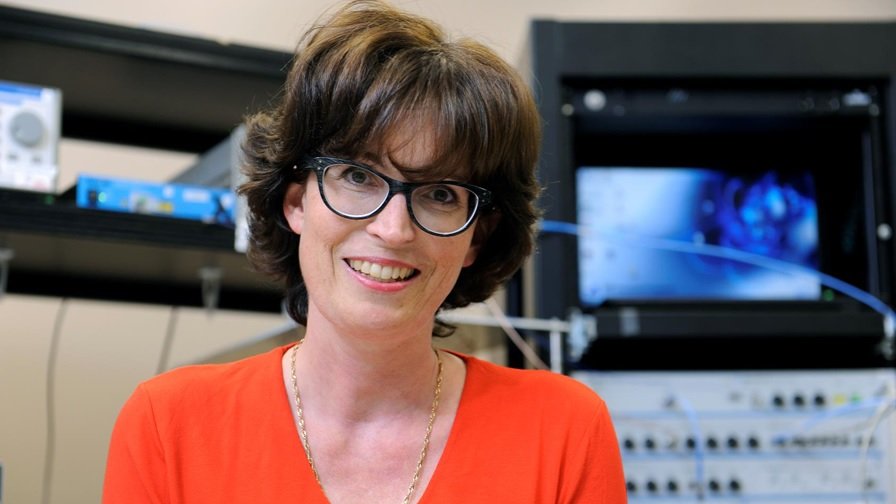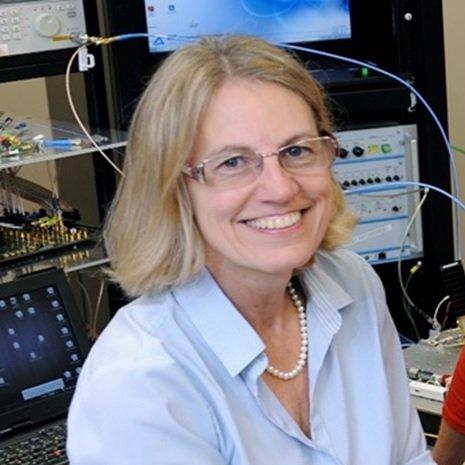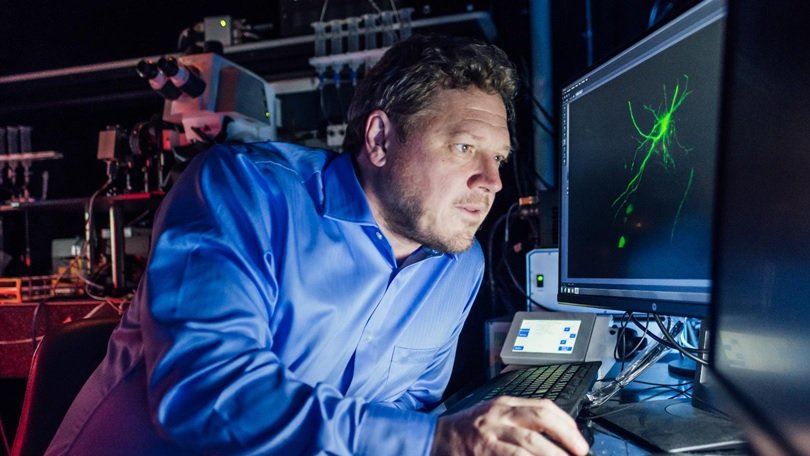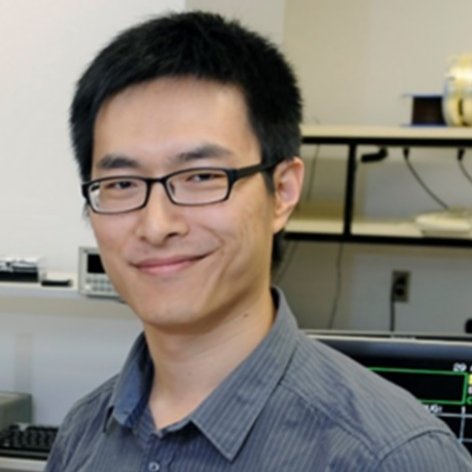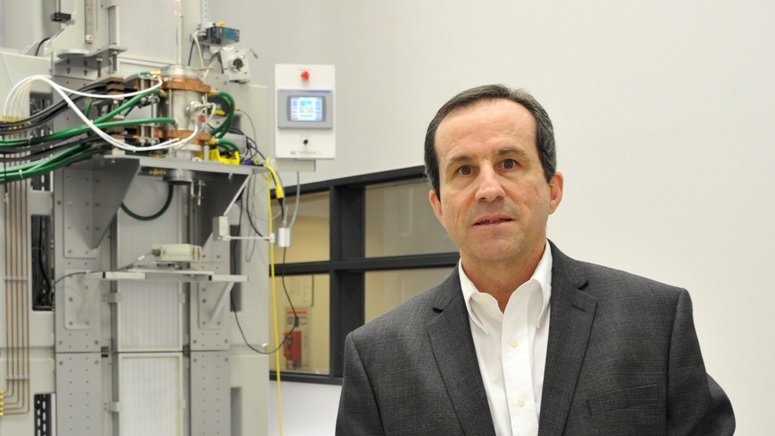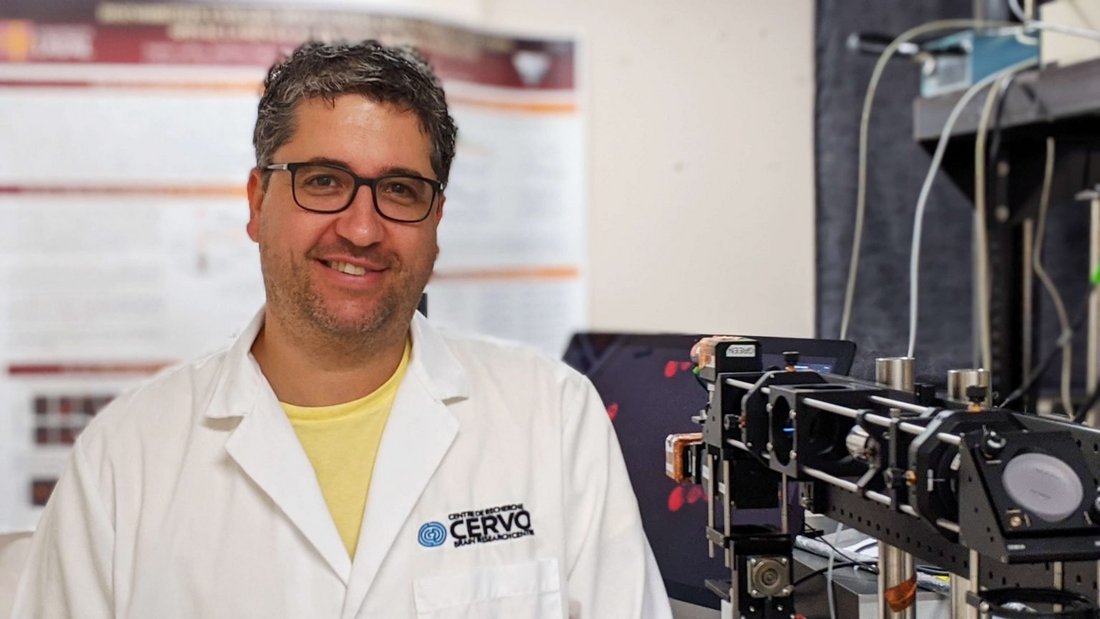Canada Excellence Research Chairs
Since 2008, the Canada Excellence Research Chairs program has helped Canadian universities build their reputation as world leaders in research and innovation in a given discipline. This prestigious program funds world-class researchers and their teams to carry out ambitious research programs that lead to groundbreaking discoveries, technological breakthroughs and the creation of important international research facilities. Chairs create strong research and business partnerships to drive innovation and economic growth. Recognized as a centre of excellence for research and training in optics and photonics, Université Laval is host to two chairs of excellence.
Objective
Train the specialists of tomorrow in the field of photonic materials within the framework of a world-renowned research program aimed at developing advanced materials for the manufacture of the latest generation optical fibers and innovative photonic devices and at improving, through the development of state-of-the-art synthetic methods, the properties of existing materials.
Research
The research activities of the CERC-P are divided into five axes:
1. Innovative vitreous materials and composites
The research activities of this axis relate to the development of glasses (silicate, phosphate, chalcogenide, oxide of heavy metals, etc.) and their exploitation in various forms (solid, optical fibers, thin layers) for applications in photonics.
2. Design and manufacture of innovative optical fibers
We develop optical fibers whose parameters are established according to the desired applications. This also covers microstructured or hybrid fibers for the different lens families.
3. Advanced chalcogenide glasses in form (thin film, glass, optical fiber)
The work aims to reduce intrinsic losses in infrared glasses and in optical fibers and components derived therefrom, by developing new glass synthesis methods. We are also seeking to develop a system capable of producing chalcogenide glass in large quantities in order to pave the way for the development of applications in several fields.
4. Design and development of hybrid materials
The research work focuses mainly on the development of multifunctional materials capable of adapting to their environment. This covers smart textiles for physiological and muscle monitoring. Other projects focus on the development of selective membranes for various applications.
5. 3D printing for manufacturing optical devices
Additive manufacturing of complex shapes is a promising avenue for the development of new specialized optical components that could not be produced by conventional methods. In particular, advances in the manufacture of preforms of multi-material optical fibers or based on chalcogenide glasses are obtained using this process.
Web site
Objective
The Canada Excellence Chair in Neurophotonics is developing state-of-the-art optical techniques to explore the dynamics of neuronal cells in order to identify new cellular risk biomarkers for major psychiatric diseases such as schizophrenia, bipolar disorder and relapsing major depression.
Research
To identify these risk biomarkers, the Chair is developing multimodal and non-invasive optical imaging techniques combined with microfluidics, including digital holographic microscopy (DHM). The DHM makes it possible to record interferometrically the wave front diffracted by the observed object. Knowledge of this diffracted wavefront (amplitude, phase, polarization, etc.) coupled with Maxwell's theory of electromagnetic wave propagation allows us to propagate it numerically and therefore form an image from these calculations. During this digital wavefront propagation, the complex effects of optical lensing can be simulated. This opens the door to the production of very simplified experimental setups, for some without any optical lens, which nevertheless make it possible to form very high resolution images. Currently, the laboratory is working on projects that aim to overcome the so-called diffraction limit by relying on these digital image formation approaches and on the fact that not only the diffracted wavefront intensity is known, but also its phase. These numerical approaches dealing with Maxwell's equations use tools including Fourier optics, wavelets and parsimony.
Chair Website: https://www.labrnp.ca/
POSITIONS: Several positions are currently available (internships, masters, doctorates) for projects ranging from experimental optics to digital imaging through cellular biophysics (pierre.marquet@neuro.ulaval.ca)
Objective
Use liquid crystals to better understand the operating principles of biological tissue and for the development of tools for studying and controlling organisms such as bacteria, insects, mice, lemmings, etc.
Research
The Canada Research Chair in Liquid Crystals and Behavioral Biophotonics conducts research along two main axes:
1- Studying the possibilities of using liquid crystals in biomedical research (such as tunable lenses for micro-endoscopes, smart lighting for insect control or adaptable lenses for ophthalmic and augmented reality applications) and
2- The enhancement of knowledge of the physical and chemical properties of liquid crystals for the study of the principles of the functioning of biological tissues (from membranes and myelin to bacterial motility).
These research projects are conducted in an exciting multidisciplinary atmosphere (close collaboration with chemists, biologists and medical researchers) and aim to advance basic and applied sciences.
Objective
Develop photonic devices and special optical fibers for signal processing and data transmission in very high speed communication networks
Research
The CRC in Advanced Photonic Technologies for Communications aims to respond to the current challenges of communications networks which must increase the efficiency and flexibility of fiber optic links in order to support the development of information and communication technologies. artificial intelligence. Work focuses on the design of optical fibers and photonic circuits to increase the amount of information transmitted at all scales, whether between microprocessors, in data centres or over long-range links.
The team designs new optical fibers with a microstructured profile, or combining various materials, to multiply the number of channels transmitted. These fibers are manufactured at the COPL and tested in our laboratories on very high throughput test benches. We model photonic circuits on silicon for optical processing of information by linear and non-linear effects. The chips are manufactured in the best foundries, characterized in our laboratory and integrated into our transmission systems. Our research includes modeling, numerical simulations and experimental validation components thanks to a first-class infrastructure. Our projects include international collaborations and partnerships with industry. Students on our team are encouraged to take advantage of the many internship opportunities.
To learn more, see the Optical Communications Laboratory.
Objective
Develop optical communications systems that increase network capacity while reducing costs
Research
The CRC in communications systems in support of cloud computing aims to create even faster innovative systems, making it possible to increase their current capabilities tenfold. By creating special optical fibers that have different modes of light transmission to replace those that transmit only one, his work will meet the constant demand to increase the flow of information at reduced cost. Today, the cloud efficiently manages our calendars, our finances and our personal information, placing data of all kinds at our fingertips.
CRC research could ensure that tomorrow's cloud allows for better resource allocation - setting the desired level of heat for our homes or power for our electric cars, and precisely controlling everything from medicine traffic, including personal safety. Our research will improve the scope and performance of the telecommunications systems that are the backbone of our business and social interactions, as well as computing services. Our projects include international collaborations and partnerships with industry. Students on our team are encouraged to take advantage of the many internship opportunities.
To learn more, visit the website of Optical Communications Laboratory.
Objective
- Better understand the organization and functioning of the healthy and diseased brain
- Improve and develop new cutting-edge technologies for neuroscience research
- Identifying new therapeutic targets to develop a new generation of pain treatments
Research
The Canada Research Chair in Chronic Pain and Related Brain Disorders uses a multidisciplinary approach to understand how the nervous system processes pain signals and how pain affects the brain.
In fact, 1 in 5 Canadians suffers from chronic pain and the proportion is even higher among the elderly. These data are concerning, as uncontrolled pain is the leading cause of disability affecting the quality of life of Canadians. Additionally, chronic pain is associated with several brain disorders, including certain cognitive deficits, anxiety or depressive disorders, and certain addictions. Unfortunately, current treatments for chronic pain rarely provide complete relief and are often accompanied by debilitating side effects. New approaches are therefore needed to tackle this public health problem.
Web Site
Objective
Develop integrated, intelligent, low-power sensors and communication systems.
Research
The CRC in silicon photonics aims to explore nanophotonic devices and their large-scale integration on a microchip. Rapidly expanding sensor networks contribute to the ever-increasing flow of data on the Internet, requiring high-speed and constant communications. This expansion taxes our energy resources and requires solutions that increase capacity while reducing the carbon footprint.
To address this challenge, the Chair is working to realize the potential of silicon photonics as an enabler of ultra-high-speed, low-energy communications. His research will allow us to allocate our precious optical resources more dynamically and intelligently. Its activities will also focus on affordable optical sensors for real-time monitoring of air and water so that scientists can understand the impact of humans on the environment. The research includes modeling, numerical simulations and experimental validation components made possible by a first-class infrastructure. The projects incorporate international collaborations and partnerships with industry. Students on the team are encouraged to take advantage of the many internship opportunities.
To learn more, check out Optical Communications Laboratory.
Objective
Develop new bioelectronic devices to increase the intelligence and functionality of biomedical systems while pushing the limits of miniaturization to unprecedented levels.
Research
The CRC in Smart Biomedical Microsystems offers a truly multidisciplinary and innovative research program at the interface of engineering, neurosciences, rehabilitation assistive technologies and life sciences. The work focuses on the development of new revolutionary methods inspired by recent advances in medical instrumentation, materials science, artificial intelligence and the integration of 3D microsystems to increase the intelligence and functionality of biomedical systems. The CRC aims to create the new, autonomous and minimally invasive biomedical technologies that will revolutionize our healthcare. The team wants to dramatically increase the intelligence of biomedical systems while pushing their miniaturization to unprecedented levels through advances in microelectronics and 3D encapsulation, wireless technologies, energy-efficient electronics, and advances in science of materials. These new devices will help to achieve more precise diagnoses and will allow the implementation of new closed-loop therapies exploiting new modes of interaction with the body and its environment, at the level of tissues, microorganisms, cells and molecules.
The CRC is developing, among other things, innovative electro-optical platforms to capture complex cerebral dynamics in living animals using miniature instrumentation technology incorporating several modes of medical instrumentation, such as optogenetics, electrophysiology, fiber photometry and spectroscopy. CRC is also focused on the development of intelligent miniature antennas as well as the design of new wearable and implantable sensors that merge multiple body signals, including multiple vital signs and inertial data, to continuously measure patient health status and minimally invasive. The CRC is also looking into the design of neuromuscular sensors incorporating embedded artificial intelligence for intelligent rehabilitation applications. CRC's multidisciplinary research program is centred on several key academic, public and industrial collaborations in the biomedical technology sector to create the world's most ambitious and innovative medical technologies.
To learn more visit the Biomedical Microsystems Laboratory.
Industrial Research Chairs
The Natural Sciences and Engineering Research Council of Canada (NSERC) Industrial Chairs aim to help universities undertake large-scale research in partnership with industry. Knowledge transfer and training are at the heart of the mandate of the holders of these chairs, who are researchers at the forefront of their field of expertise.
Research
The chair program will contribute to reinventing optical fibers to allow the transport of several modes of light where the old types of optical fibers could only transport one. The research work will focus on the study of spatial division multiplexing with multiple modes in a single fiber core (also known as modal multiplexing). The work carried out within the framework of the chair program will make it possible to answer questions relating to the nature of the receivers associated with these systems and to the extensibility of simple receiver structures as a function of distance, as well as the challenges posed by the combination from modal multiplexing to wavelength division multiplexing. The chair's work will lead to the creation of tools for the design of fibers, the development of interaction models, the improvement of fibers and a better understanding of the link between interactions and the complexity of receptors.
Objective
Train highly qualified personnel in optical design, metrology and optomechanics and support applied research in the optics-photonics industry through innovation and collaboration.
Research
Since the success of an optical instrument is largely attributable to the use of innovative optical concepts, the NSERC Industrial Chair in Optical Design focuses on the modeling, design and analysis of optical systems. The fields of application are varied, from agriculture to the recovery of residual materials, including mining and the space industry. The expertise of the team and the world-class infrastructure available to the Chair allow us to carry out projects from design to completion, including manufacturing, prototyping and characterization. Our partners have been able to count until now on several transfers of technology and optical designers which today allow them to be more competitive on a global scale.
The Chair also actively supports training activities within the only Canadian research laboratory to offer graduate-level university training in optical design. Graduate students can carry out their studies in collaboration with our partners and thus perfect their working skills in an industrial research environment. The participation, involvement and commitment of industry help create an environment conducive to innovation and progress.
To learn more about our activities, visit the LRIO - Optical Engineering Research Laboratory.
NSERC Industrial Research Chair in Femtosecond Laser Photo-Inscribed Photonic Components and Devices
Objective
Development of active and passive photonic devices serving various fields of application including biomedical, industrial and the environment.
Research
The Chair focuses on the generation and processing of electromagnetic radiation through devices and components operating in different spectral domains, mainly mid-infrared. The Chair relies on the use of femtosecond laser sources allowing the development of photo-inscribed photonic components. For example, the development of devices such as monolithic fiber lasers relies on the development of certain key photonic components such as photo-inscribed fiber Bragg gratings. Laser-matter interactions at the femtosecond scale have also led to the development of a full range of new industrial processes, allowing the cutting, cleaving or welding of materials or combinations of materials, including dielectrics (glass, polymers and crystals), semiconductors and metals. The scientific program of the chair is therefore based on two main axes: I: coherent fiber sources, emitting in particular for the mid-infrared, and their applications; II: advanced laser processes and their applications. The Chair's activities have the fundamental objective of putting the scientific breakthroughs achieved in an academic research framework for the benefit of its industrial partners (LMI, Laserax, Coractive, Teraxion and TLCL).
NSERC/Halifax Biomedical Inc. Industrial Research Chair in Optical Technologies Used in Neurosurgery
Objective
Develop fiber optic devices that can be used during brain surgery to observe and identify tissues.
Research
Neurosurgeons are always looking for new ways to improve their surgical procedures. The optical technologies developed in Daniel Côté's lab offer them revolutionary solutions: they are versatile and affordable; they can be miniaturized; and the many wavelengths accessible can provide different types of information depending on the tissue. The development of innovative optical techniques for neurosurgery is a major challenge. Dr. Côté's team is working to create many types of fiber optic devices to provide guidance during brain surgery. These devices will notably help surgeons identify brain regions for the implantation of electrodes used for deep brain stimulation, an effective treatment for the symptoms of Parkinson's disease. In addition, the strategies developed could be used in the treatment of other diseases affecting the brain, in particular cancer.
To learn more, visit DCC-Lab.

